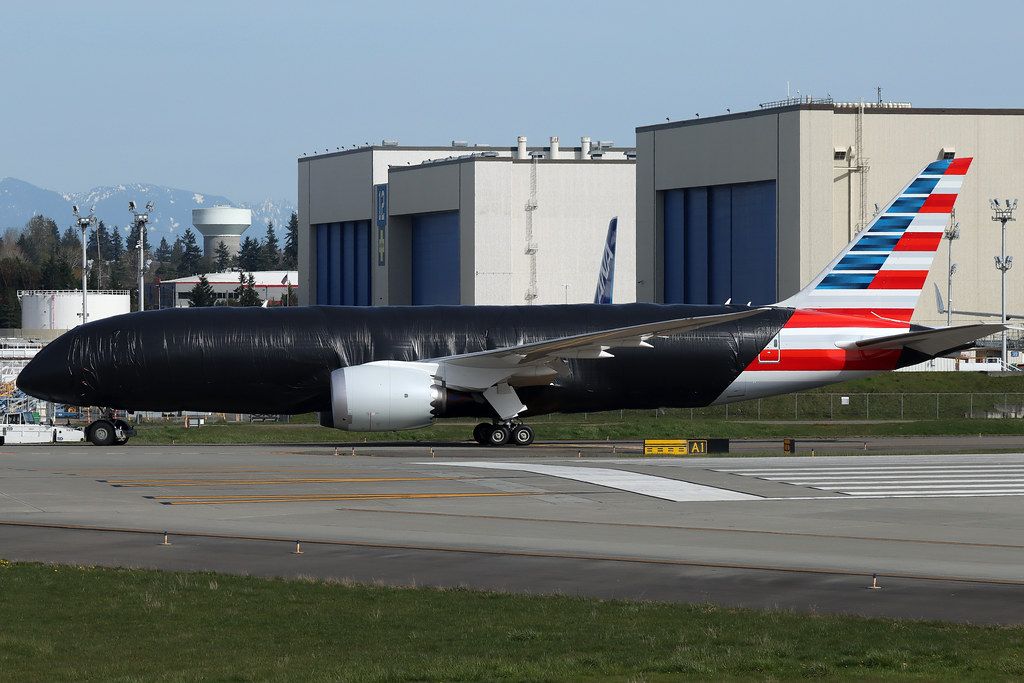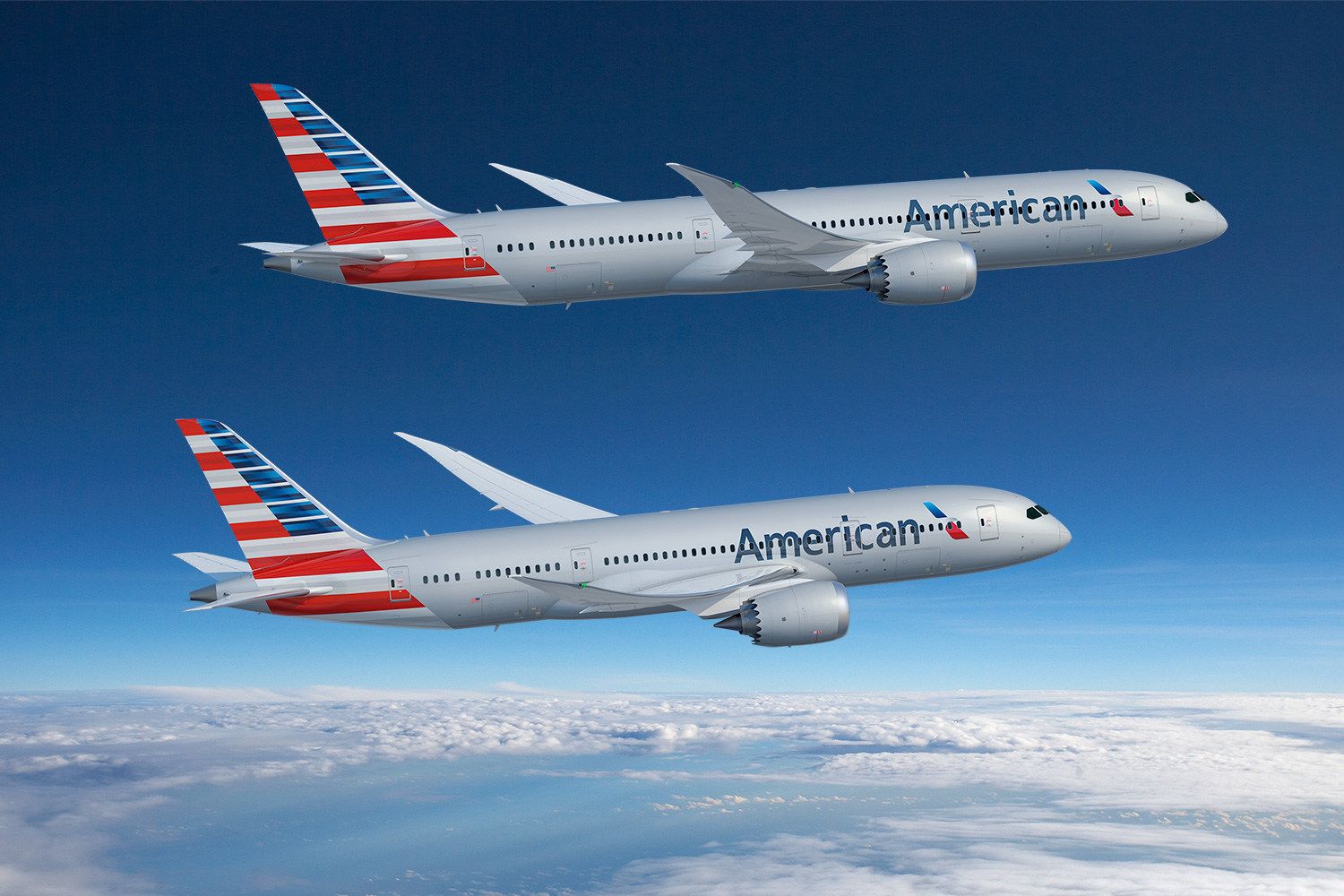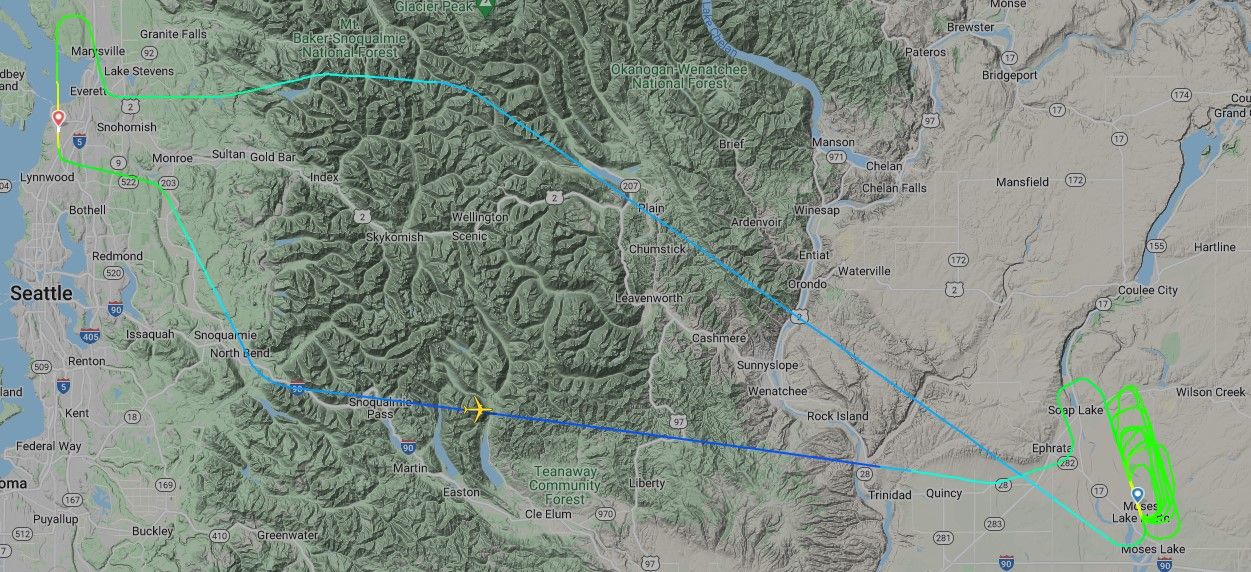* Article updated 07:25 UTC 12/04/2022 with information from Boeing *
Last week and over the weekend, images began to emerge of a rather curious-looking American Airlines Boeing 787-8 'Dreamliner.' As seen in the photograph above, the aircraft's fuselage has been wrapped almost entirely in a black sheet, giving it an unorthodox appearance. But why has this happened? Let's take a look.
A protective measure
As it happens, the dark 'blanket' being worn by the aircraft, which resembles a somewhat sleeker motorcycle cover, is there to protect its fuselage. This part of the Boeing 787 consists of composite materials. As Simple Flying explored last year, these compounds are created by synthesizing two existing materials.
The advantage of this approach is that the compound takes on new properties not held by the individual materials, as well as reducing weight. The latter of these has been a key selling point for the 787 family, although there were initially some reservations about how well its composite fuselage would fare in a crash.
But why does the makeup of the aircraft require a protective blanket? As it happens, it has reportedly been recently stripped of its paint ahead of receiving a fresh coat. Being stored outside, exposure to UV from the sun could damage the composites that constitute much of the jet's fuselage, as they're no longer protected by paint. As such, the black wrap plays this role instead. Boeing explained to Simple Flying:
"This airplane required work to be performed that necessitated a change to the standard flow of our paint operations. The airplane was covered temporarily while it waited to begin the final stage of its paint cycle. The final elements of painting this airplane are now underway. It’s standard practice to cover unpainted areas if schedules require temporary storage outside before the application of paint is complete. "
How can UV radiation affect carbon composites?
But what exactly does ultraviolet radiation do that has the potential to damage the carbon composite materials that constitute a significant part of the Boeing 787's structure? As it happens, the impact of UV has the ability to significantly weaken the compounds involved. Indeed, specialist blog Carbon Fiber Gear explains that:
"UV radiation and condensation operate in a synergistic manner that causes erosion of the epoxy matrix, but it doesn't affect the carbon fiber. The epoxy erosion may ultimately decrease tensile strength by up to 29 % and lead to less durability."
In aviation, epoxy resin is typically used as a structural matrix reinforced by fibers, including carbon fiber. Carbon fiber reinforced polymers (CFRPs) account for almost 35 tonnes of a 787's airframe, made from just over 23 tonnes of pure carbon fiber. Put simply, Pitaka concludes that, while "carbon fibers themselves are not susceptible to UV damage, the resin used to bond carbon fibers together can be."
Stay informed: Sign up for our daily and weekly aviation news digests.
The aircraft in question
The registration of the wrapped-up Boeing 787-8 is N876AL, with this airframe, as seen by the livery on its uncovered tail, being destined for American Airlines. According to ch-aviation.com, it is 1.47 years old, having first flown in October 2020.
In the year and a half that has followed since then, the aircraft is yet to have operated a revenue-earning flight for American Airlines. Data from ch-aviation suggests that October 2022 had been earmarked for the aircraft's delivery, although issues with the type have seen some pushed to next year. The Fort Worth-based US legacy carrier presently has 24 787-8s in its fleet, with another 13 on order.
What do you make of N876AL's black wrap? Did you know about this procedure? Let us know your thoughts in the comments!
Sources: Carbon Fiber Gear, Pitaka



